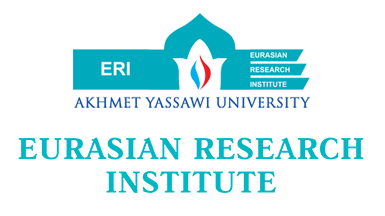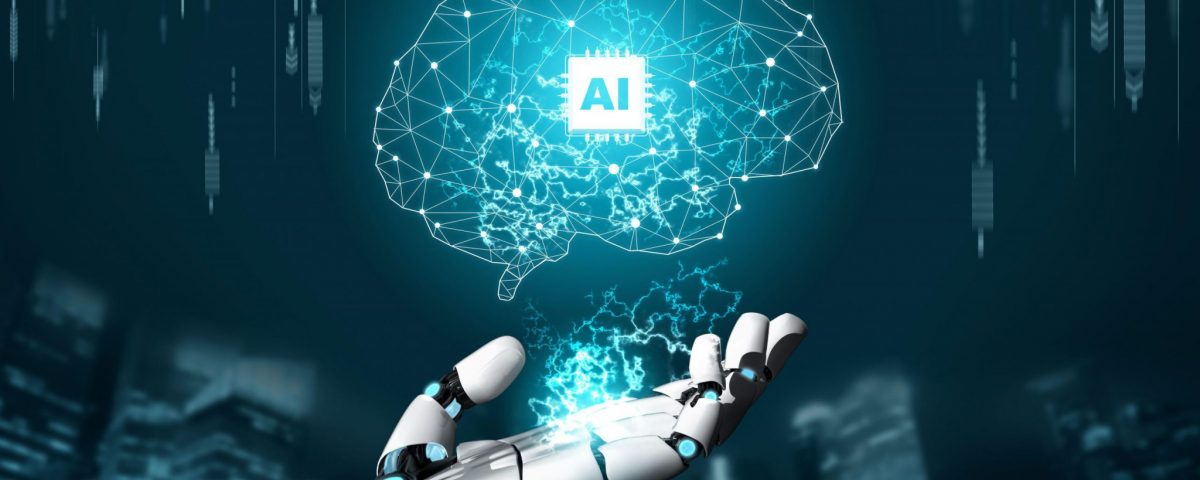The role of education in any country’s existence is crucial. The quality of the labor force, the complexity of the economy, and the crime level are all factors that depend on the quality of education in any given country. Yet, building a comprehensive, relevant, and high-quality educational system is an incredibly challenging and costly task consisting of multiple complex stages, including developing and distributing physical infrastructure, training, and recruiting specialists, and dynamically adapting the system to the country’s needs and labor market. Finally, the entire system must be regularly tested for effectiveness, relevance, and equality. Within such complex systems, there are always numerous potential points of failure, a particularly pronounced challenge in developing countries struggling with corruption, institutional failures, and low levels of societal trust. Consequently, any technological innovation that can help build and maintain an educational system can have tremendous value for the countries that are actively working on their education systems.
One of the relatively recent examples of such technology is the Internet – it provided hundreds of millions of people with relatively low-cost and easy access to vast knowledge databases and facilitated research and international cooperation in the educational sector. Without a doubt, the Internet revolutionized the whole sphere, changing its rules and practices for good. Now, there is a new technology on the rise that has the potential to further both the positive and negative aspects of the Internet revolution and disturb the status quo of the sector once again. This technology is artificial intelligence (AI), which has already sent shockwaves throughout the educational world. Both academia and policymakers involved in the sector must pay close attention to AI technology and adapt their approaches to reap its benefits.
According to Encyclopaedia Britannica, artificial intelligence is “the ability of a digital computer or computer-controlled robot to perform tasks commonly associated with intelligent beings” [Encyclopaedia Britannica, n.d.]. Those tasks usually include the ability to learn, recognize, and analyze speech and visual imagery, make decisions, interpret text and voice input, etc. With the ever-expanding arsenal of capabilities, the possible applications of AI in education seem limitless. Yet, currently, as technology is still in its early adoption days, there are more drawbacks rather than advantages, the main one being the usage of AI by students to generate large amounts of text, cheat on exams, etc. Numerous universities across the globe and in the region have prohibited the use of AI for their students and employ various programs for the detection of the use of AI in students’ texts. However, even the most advanced of these programs do not always give correct assessments and can result in false accusations or overlooking [Steele, 2024].
However, if students do not use AI to directly write texts for them, but rather use it to help them generate ideas, check their grammar, or even tutor them, then it becomes impossible to detect such an intervention. Moreover, in these cases, the use of AI might not constitute academic dishonesty, depending on the nature of the course and assignment given to the students. Therefore, a complete prohibition of the use of AI by students is both unfeasible and undesirable for academia. Consequently, the most sensible scenario is one that incorporates AI technology into the educational sphere, reducing the existing harms and risks, and expanding the benefits.
To integrate AI into the educational sphere its current and potential benefits and risks are to be assessed and calibrated in a way that could benefit academia in general. Such an incorporation of AI is possible in several ways. Firstly, and most obviously, AI can be used to automate already existing semi-mechanical processes, such as grading students’ work. Meanwhile, there are already a lot of less sophisticated computer programs to grade standardized tasks, such as multiple-choice quizzes. AI can handle more complex assignments, including essays, open-ended questions, etc. It can both grade such papers and give sufficient and helpful feedback to the students. For instance, Chen et al. [2022] tested the use of AI technology to improve students’ performance using just two instruments – the first one identified correct and incorrect answers in students’ work and the second one asked guiding questions that helped students reach the correct conclusions. With just two of those instruments, the researchers were able to achieve statistically significant improvements in students’ results.
Moreover, the reduction in the amount of mechanical and semi-mechanical work done by staff will result in the relocation of their time towards more effective activities, such as conducting the classes or designing the courses. This will also positively affect educational institutions, lowering the overall costs for the provision of educational services. Furthermore, AI-driven grading ensures consistency and fairness, eliminating potential biases that human graders might unintentionally introduce.
Secondly, AI has enormous potential as a tool for personalized learning assistance. However, this is just the tip of the iceberg, as AI’s abilities can be expanded to incorporate personalized learning support – technology can store and analyze information about individual students, their scores, interests, preferences, studying patterns, strengths, and weaknesses. Based on that information AI can offer each student their personalized learning path to optimize and enhance the learning process. Paired with instant feedback and step-by-step guidance, these technologies have the potential to play the role of a highly knowledgeable and flexible private tutor who has an endless bank of tasks, cases, and problems for students to solve tailored to their strengths. Such a practice can increase every student’s academic potential by orders of magnitude at a fraction of the cost they would have to bear on their own.
Regarding the risks of the incorporation of AI into the educational system, there are three main points: data privacy, misinformation, and human relations. Firstly, as with almost any other digital platform that uses the Internet, AI applications used for studying will collect data from their users including behavior patterns, and personal and academic information. There is always a possibility that due to a security breach, this data can end up in the wrong hands, which can negatively affect both students and educational institutions. On the other hand, such cases are rather infrequent, and with the employment of adequate and regularly updated security measures, such as data encryption, it is possible to minimize these risks even further. Moreover, automated and AI-driven databases can reduce the risks associated with the human factor, making it virtually impossible for managers or academic staff to get access to data for their use or leak it on purpose.
The threat of misinformation associated with the use of AI is a more substantial and widely recognized phenomenon that can undermine the whole idea of using AI technology for educational purposes. The misinformation issue consists of two separate problems.
Firstly, there is a concept of AI hallucinations – the process of “fabricating text that is not based on any real-world knowledge or context but rather on patterns and associations it has learned from its training data” [Siontis et al., 2024]. Due to those hallucinations, AI can put together cohesive and logical texts based on false facts or premises or refer to and cite non-existent papers. This issue can cause sizable problems in the educational sphere if AI is to ever be used as a learning assistant – school and even university students might not have enough critical thinking skills and habits to be able to sufficiently filter and cross-check the information from AI. Therefore, fake information created because of AI’s “hallucinations” has the potential of taking root deep within students’ base of knowledge, negatively affecting the educational process as a whole.
Secondly, there are issues connected with bias. Inherently, due to its nature, AI is a technology that builds its knowledge and awareness on the information it can access in the open sources all around the Internet. Thus, the origins of such biases often stem from the datasets used to train these systems, which may reflect societal inequalities or contain historical inaccuracies. According to Kamalov “these biases, when embedded in educational AI applications, can lead to a perpetuation of existing disparities, and even exacerbate them, ultimately impacting students’ learning outcomes, opportunities, and access to resources” [Kamalov et.al, 2024] The biases can already be observed to a certain extent in the AIs such as ChatGPT or DALLE, for instance, the latter has a higher chance of generating images of women when asked to portray a nurse, and vice versa when the prompt asks for images with lawyers [Mishkin et al., 2022].
However, as this problem is widely recognized, several steps can be taken to reduce the severity of the issue. Firstly, educational institutions should make sure that their AI models are only trained on verified high-quality data sets, which will lower the risk of a mistake significantly. Secondly, the students working with AI should be warned about and trained to prevent the appearance of AI hallucinations or biases through correct prompt writing. Moreover, there should be additional emphasis on critical thinking and cross-checking the data, as it will be crucial for students to rely on multiple sources in the era of AI technologies. Finally, AI should not be the one to make decisions in areas that can potentially contain subtle biases, such as student admission. The mix of such new and old instruments should help minimize the issue of misinformation.
All things considered, it can be concluded that while AI technology is still undergoing its rapid development process and might have a disruptive impact on the educational sphere currently, its future incorporation into the educational process seems almost inevitable. This means that educational institutions and government bodies that are interested in further development must do their best to analyze all the aspects of the occurring AI revolution and implement relevant changes to adapt their systems as soon as possible. A proactive approach is essential, ensuring that AI becomes a complementary tool to enhance human capabilities rather than replace them.
References:
Chen, Lijia, Chen, Pingping, and Lin, Zhijian (2020). Artificial Intelligence in Education: A Review. IEEE, 8. Retrieved from https://ieeexplore.ieee.org/document/9069875 Accessed on 13.12.2024.
Encyclopaedia Britannica (n.d.). Artificial intelligence. Encyclopaedia Britannica. Retrieved from https://www.britannica.com/technology/artificial-intelligence. Accessed on 12.12.2024.
Kamalov, Firuz, Calonge, David Santandreu and Gurrib, Ikhlaas (2023). A new era of artificial intelligence in education: Towards a sustainable multifaceted revolution. Springer AI in Education Series, 45 (2), 15–32. Retrieved from https://www.mdpi.com/2071-1050/15/16/12451. Accessed on 15.12.2024.
Mishkin, Pamela, Ahmad, Lama, Brundage, Miles, Krueger, Gtetchen, and Sastry, Girish (2022). DALLE 2 preview: Risks and limitations. OpenAI. Retrieved from https://github.com/openai/dalle-2-preview/blob/main/system-card.md Accessed on 22.04.2023.
Siontis, Konstantinos, Attia, Zachi, Asirvatham, Samuel, and Friedman, Paul (2024). ChatGPT hallucinating: Can it get any more humanlike? Journal of AI Ethics in Education, 5 (1), 12–18. Retrieved from https://academic.oup.com/eurheartj/article/45/5/321/7471676. Accessed on 14.12.2024.
Steele, Chandra (2024). How to detect text written by ChatGPT and other AI tools. PC Mag. Retrieved from https://www.pcmag.com/how-to/how-to-detect-chatgpt-written-text. Accessed on 14.12.2024.
Note: The views expressed in this blog are the author’s own and do not necessarily reflect the Institute’s editorial policy.

